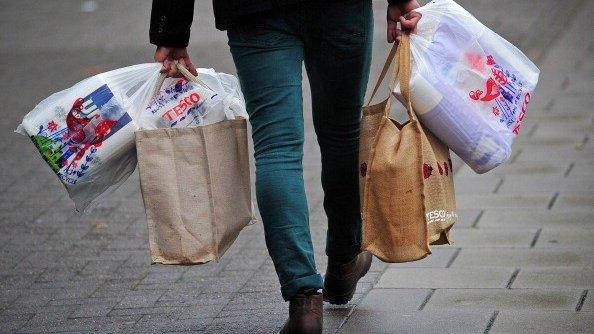Tesco turns stale as competitors freshen up ideas
- Published
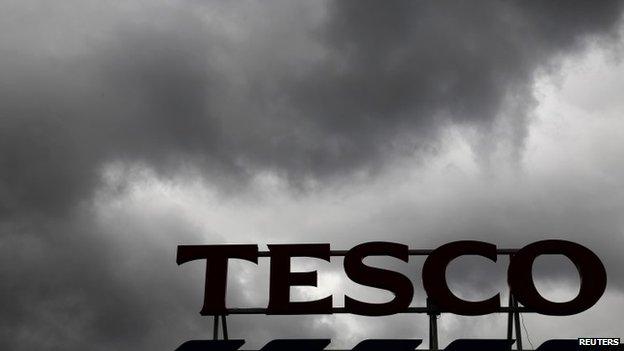
The troubles just keep on mounting for Tesco.
Stagnant sales, falling profits, boardroom turmoil, dodgy accounting and now its biggest loss in history.
No wonder shoppers and investors alike are questioning what was, until recently, the undisputed king of UK retailing, revered as much for its gargantuan sales as its continual innovation.
So where did it all go wrong?
Innovation
From humble beginnings selling army surplus food in the aftermath of the First World War, Tesco's stranglehold on the UK's food retailing sector began to tighten in the 1990s.
It was one of the first major retailers to understand the power of loyalty cards - not just in boosting sales through discounts but in using vast amounts of customer data to help tailor individual shopping experiences. Tesco's Clubcard has since proved a blueprint for reward schemes countrywide.
It was a pioneer both in introducing smaller convenience stores in towns and cities under the Express and Metro brands, and in differentiating own-label products with its Value and Finest ranges.
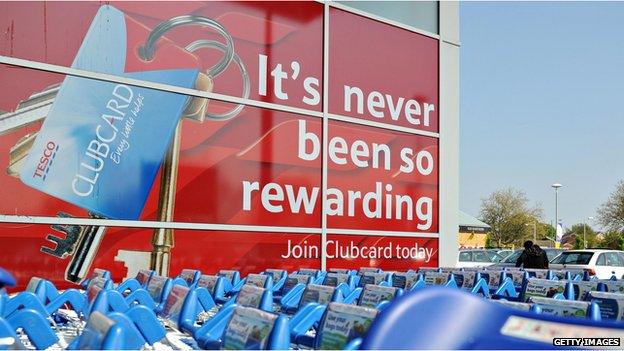
Tesco built its dominance in the 1990s on continual innovation
Tesco was also at the forefront of online shopping, understanding the importance of home delivery in the internet age.
In short, it "understood its customers and implemented this understanding on the shop floor," says Neil Saunders at retail research group Conlumino.
"Its marketing was both clear and compelling."
From snapping at the heels of Sainsbury's in the mid-1990s, Tesco's share of the market hit almost a third by 2006, almost twice that of its erstwhile rival. It was opening new stores in the UK at a rapid rate and embarking on a substantial overseas expansion plan that helped it become the world's third largest retailer.
There was, it seemed, no stopping this retail leviathan bent on global domination.
'Startling decline'
And yet things have turned sour remarkably quickly.
Sales have been stagnant for the past four years while hefty profits have turned into significant losses. Last year, market share fell below 30% consistently for the first time in eight years. And despite a rally early this year, Tesco's share price is still down by more than 20% over the past 12 months.
Investors would normally pile in to a blue riband stock after such a startling decline, but as Garry White, chief investment commentator at Charles Stanley stockbrokers, says, some City investors refer to Tesco as a 'value trap' - a bargain stock that fails to perform.
Some reasons for the supermarket's dramatic fall from grace were outside the retailer's control, others less so.
The financial crisis and subsequent recession focused consumers' minds on value and led to the rise of discount chains - primarily Germany's Aldi and Lidl - at the expense of the established UK supermarkets, primarily Tesco.

At the same time, changes in shopping habits meant consumers were less willing to visit large out-of-town hypermarkets - the kind Tesco had invested heavily in - when they could get their groceries delivered at the click of a mouse.
Perhaps more importantly, Tesco became "complacent", according to Mr Saunders.
"It became a bit arrogant about its position, lost its customer focus and stopped innovating."
He also argues the company became too focused on profit and stopped investing in stores and customer service. This lack of investment became all too obvious on the shop floor.
Tesco also lost a lot of money, not to mention management time, on expensive overseas projects such as Fresh and Easy, its failed foray into the lucrative US market.
Finally, the company seems to have lost its way - where once there was a clear vision and identity, now there is indecision and confusion.
As Fraser McKevitt, head of retail and consumer insight at research group Kantar Worldpanel, says: "There has been no big innovation for a long time, while nobody knows what [the company] stands for."
The appointment of marketeer Dave Lewis as chief executive following the short and ultimately unsuccessful reign of Philip Clarke recognised as much.
"Tesco has a major brand problem and Mr Lewis understands brands," says Mr McKevitt.
'Radical solutions'
But what can he do to help Tesco turn the tide in a retail landscape that has changed considerably since the chain's heyday? Not only is the market more fragmented and more competitive, but all grocery retailers have yet to find a way to make good money from online shoppers.
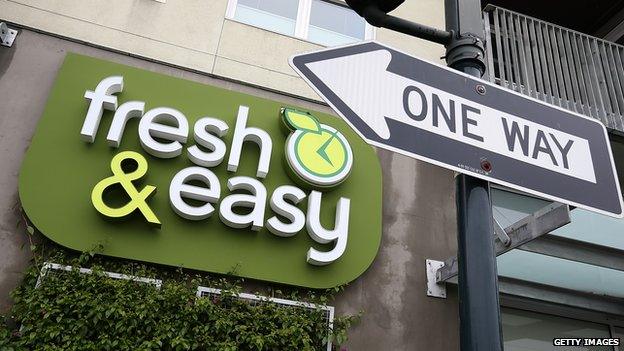
Tesco's attempts to break into the US market with Fresh and Easy failed
Mr Clarke launched a £1bn turnaround plan that did little to convince investors. His successor will need to do more than throw money at the problem.
"Radical solutions are needed," says Rahul Sharma, retail analyst at Neev Capital.
"Tesco's predicament is similar to other major global retailers such as Walmart and Carrefour - it is wedded to its big stores. There are no easy answers."
These stores are not just a major source of profits, he argues, but they are integral to the distribution of home-delivered goods.
Simply selling off big stores is not, therefore, an easy solution.
But whatever direction Tesco chooses to go, whether it be reinvigorating both the brand and its big stores, or becoming a more streamlined business focusing on smaller outlets, one thing is certain - it is unlikely to return to its former glory.
"Tesco can be turned around, but it will take a few years," says Mr Saunders.
"However it will never get back to where it was."
For those critics of Tesco, who bemoan its role in ousting local retailers and paying farmers unsustainably low prices for their produce, this is perhaps no bad thing.
- Published23 September 2014
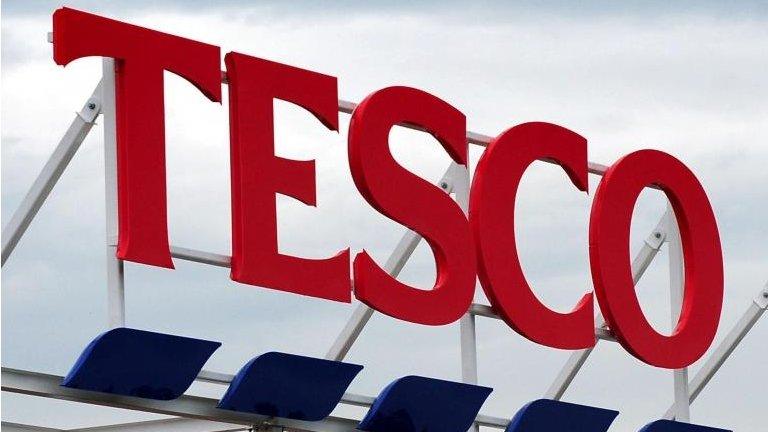
- Published22 September 2014
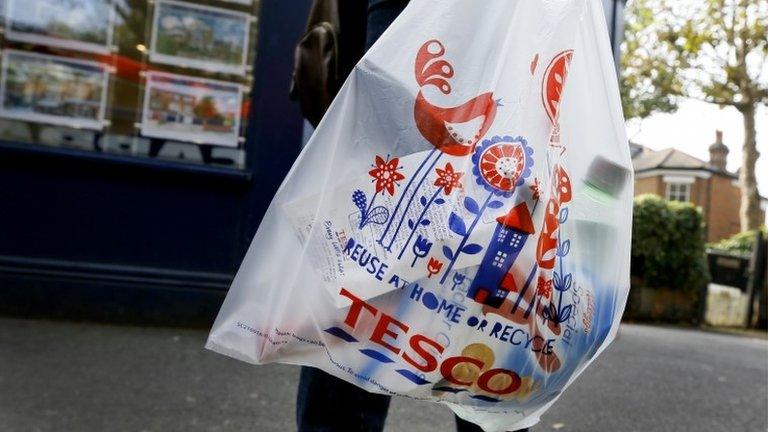
- Published9 September 2013
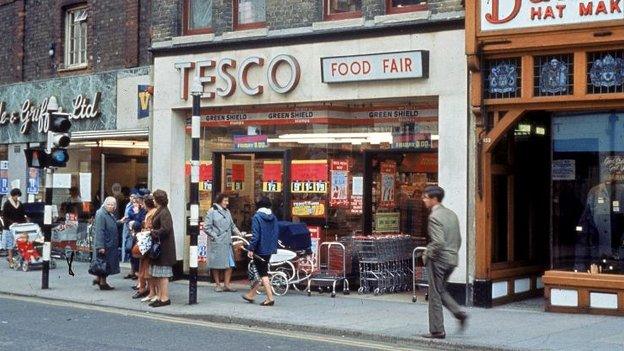
- Published27 August 2014
